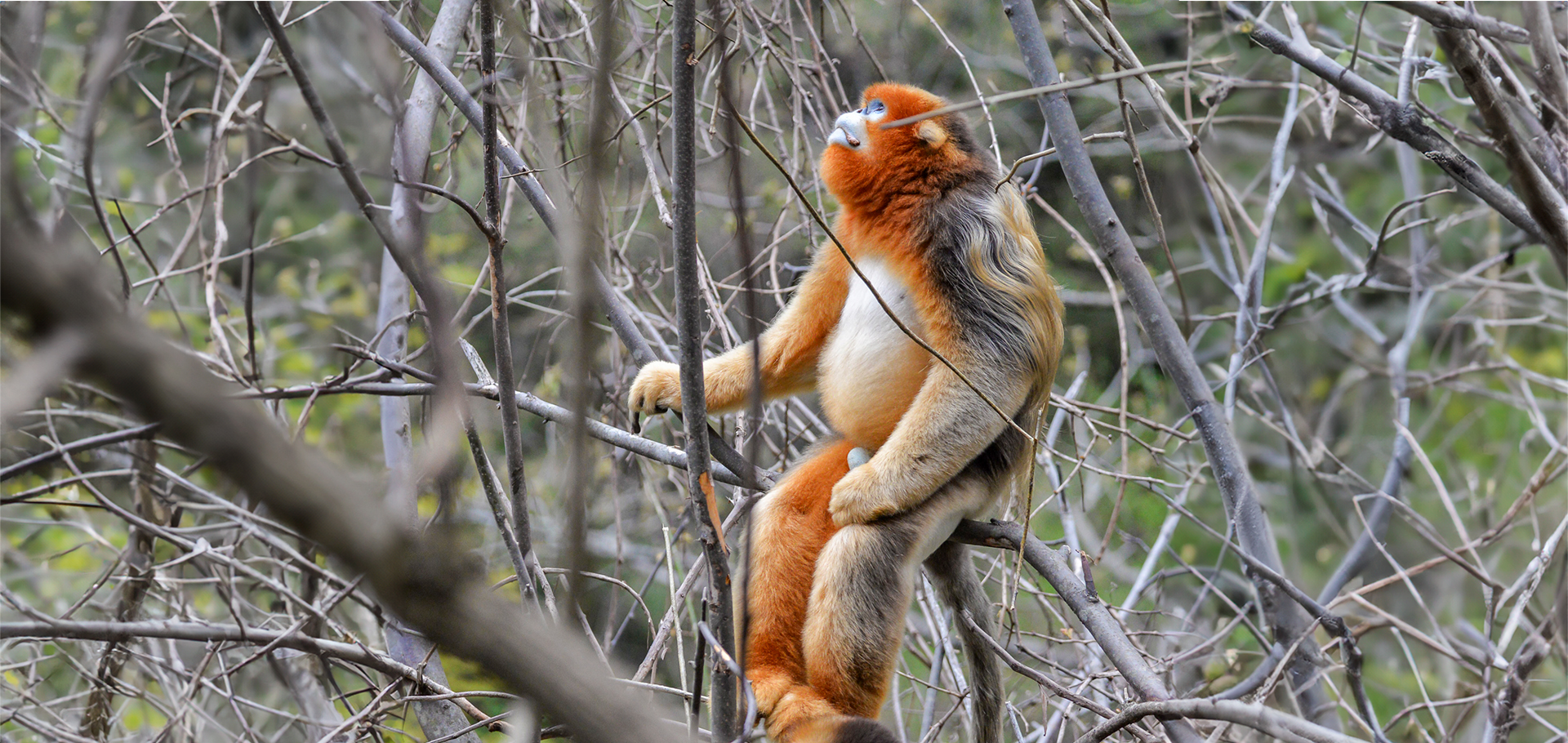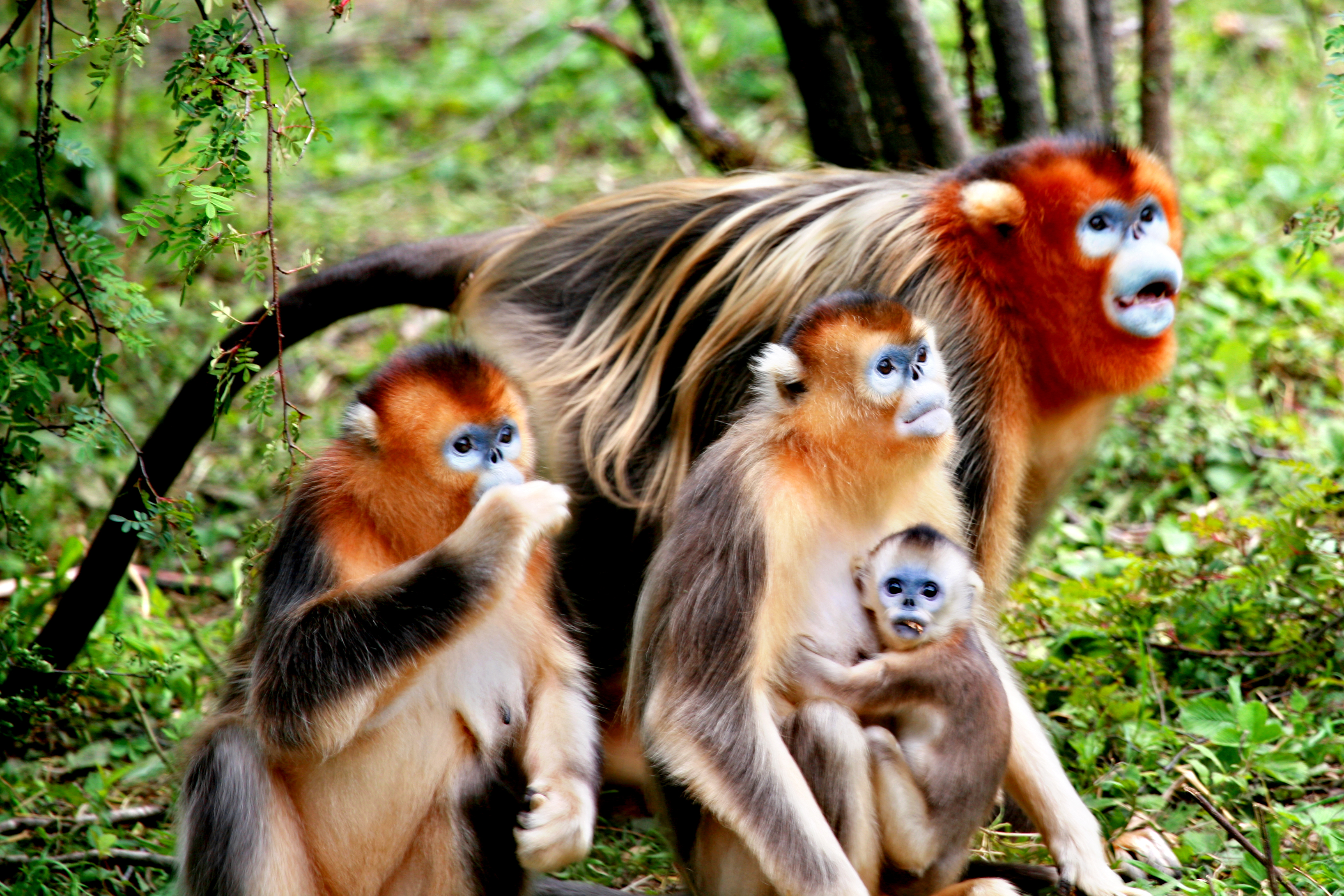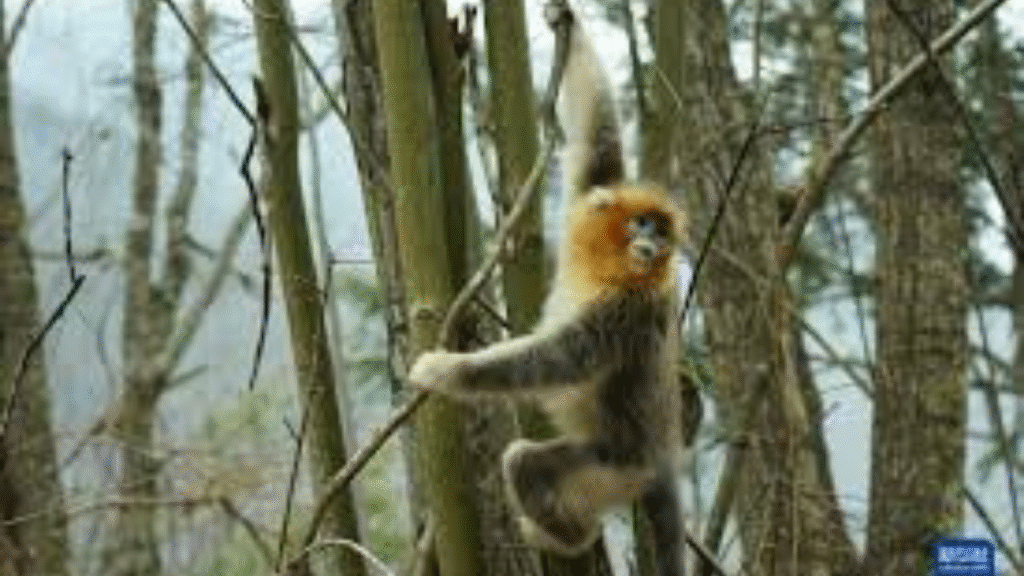Imagine trekking through misty, snow-capped peaks in central China, where the air is crisp and the trees whisper secrets of ancient forests. Suddenly, a flash of golden fur catches your eye—a troop of goldstumpfnase swinging gracefully from branch to branch. These remarkable primates, known scientifically as Rhinopithecus roxellana, aren’t just any monkeys; they’re the goldstumpfnase a symbol of resilience and beauty in one of the world’s harshest environments. With their striking blue faces and flowing golden capes, the goldstumpfnase captivates hearts and minds, reminding us of nature’s incredible diversity.
As an expert in primate biology with over a decade of field research in Asian mountain ecosystems, I’ve had the privilege of observing these enchanting creatures up close. The goldstumpfnase isn’t merely a subject of study; it’s a testament to adaptation and survival. In this article, we’ll dive deep into their world, exploring everything from their fluffy coats to their tight-knit family bonds. Whether you’re a student curious about wildlife or an eco-enthusiast dreaming of conservation adventures, there’s hope in every story here—the goldstumpfnase is fighting back against odds, and with human help, their future looks brighter than their fur.
These monkeys, often called golden snub-nosed monkeys in English, thrive in places where most animals would shiver and retreat. But don’t worry; we’ll break it all down in simple terms, like chatting over a warm cup of tea. Let’s swing into the details, shall we?

Photograph Endangered Golden Snub-Nosed Monkeys in China’s Nature Reserves
The Striking Appearance of the goldstumpfnase
What makes the goldstumpfnase stand out in a crowd of primates? It’s that eye-popping look, you know—the kind that stops you in your tracks. Picture a monkey with a face like a porcelain doll, framed by a mane that rivals a lion’s, all in shades of gold and orange. This isn’t just for show; their appearance is perfectly tuned for life in the chilly mountains.
Physical Features Up Close
The goldstumpfnase boasts a body that’s built for both agility and warmth. Adults measure about 50 to 70 centimeters from head to rump, with tails just as long or longer—perfect for balance during those daring leaps between trees. Males tip the scales at 15 to 20 kilograms, while females are lighter at around 10 kilograms. It’s amazing how sexual dimorphism plays out here; males grow those impressive golden “capes” on their backs, sometimes reaching 50 centimeters long, like a superhero’s cloak.
Their fur is a masterpiece of nature: thick, woolly undercoat for insulation, topped with longer guard hairs that shimmer in the sunlight. Colors range from reddish-gold on the body to deep brown on the back and tail, with black accents on the head and shoulders. But the real showstopper? That snub nose—short and upturned, with nostrils facing forward. Why? It helps them breathe easier in the thin, cold air at high altitudes. And those bright blue eye rings and white muzzle? They make facial expressions pop during social chats.
Oh, and here’s a quirky detail: Adult males develop wart-like growths at the corners of their mouths. No one knows exactly why—maybe for display during mating season—but it adds to their unique charm. Juveniles start life with grayish fur that turns golden as they grow, a transformation that’s as heartwarming as watching a sunrise.
Variations Among Subspecies
Not all goldstumpfnase look exactly alike; there are three subspecies, each tweaked by their local homes. To make this crystal clear, here’s a handy table comparing them:
| Subspecies | Key Location | Distinct Features | Estimated Population (Recent Data) |
|---|---|---|---|
| Moupin [goldstumpfnase] (R. r. roxellana) | Sichuan Basin mountains | Longest tails, robust build | ~10,000 |
| Qinling [goldstumpfnase] (R. r. qinlingensis) | Qinling Mountains, Shaanxi | Slightly shorter fur, adapted to denser forests | ~4,000 |
| Hubei [goldstumpfnase] (R. r. hubeiensis) | Shennongjia, Hubei | Lighter coloration, smaller groups | ~1,200 (growing!) |
This table highlights how these variations help each group thrive in their niche. It’s optimistic to note that the Hubei population has doubled in recent years—proof that targeted protection works wonders.
From my expeditions, I’ve seen how these differences shine in the wild. The Moupin type, with their flowing tails, seem like elegant dancers in the wind-swept pines.
Where the goldstumpfnase Calls Home
High up in China’s rugged spine, the goldstumpfnase has carved out a kingdom of conifers and mist. These aren’t beach bums; they’re mountain maestros, perfectly at home where snow lingers for months.
Distribution Across China
The goldstumpfnase is China’s alone—an endemic star confined to four provinces: Sichuan, Gansu, Shaanxi, and Hubei. Their range spans fragmented pockets in the Min Mountains, Qinling range, and Shennongjia forest, totaling less than 40,000 square kilometers. Why so spotty? Human expansion has sliced their habitat into islands, but here’s the bright side: Core areas like the Qinling Mountains host thriving troops, thanks to national parks.
In numbers, experts estimate 15,000 to 20,000 individuals left in the wild, down from higher counts decades ago, but stable in protected zones. It’s heartening to see surveys showing population growth in reserves—nature bounces back when we give it room.
Ideal Habitats in High Altitudes
Picture elevations from 1,200 to 3,300 meters: mixed forests of oaks, pines, and rhododendrons, blanketed in snow from November to March. Summers bring mild warmth (around 20°C), but winters plunge to -10°C. The goldstumpfnase loves this rollercoaster—deciduous trees provide spring fruits, while evergreens offer year-round shelter.
These habitats aren’t just pretty; they’re lifelines. Lichens drape from branches like festive garlands, a staple food when fresh leaves are scarce. Rivers and streams weave through, quenching thirst and aiding travel. Sadly, logging and farming nibble at edges, but reforestation projects are planting hope—literally—restoring corridors for safer wanderings.
From my treks, the thrill of spotting a troop silhouetted against snowy peaks never fades. It’s a reminder that these homes, though tough, are treasures worth safeguarding.

Conservation of the Golden Snub-nosed Monkey on the Basis of Research and Education | PANORAMA
Daily Life and Social Dynamics of the goldstumpfnase
Life for the goldstumpfnase is a blend of hustle and harmony—think a big family reunion that never ends, full of chatter, chases, and cuddles. They’re diurnal dynamos, kicking off dawn with whoops that echo like mountain calls.
Group Structures and Bonds
At the heart is the one-male unit (OMU): one boss male, several females, and their kids—totaling 5 to 20 members. These harems roam 10 to 40 square kilometers, overlapping like friendly neighbors. Bachelor males form all-male squads of 4 to 10, plotting takeovers (harsh but natural). In lean times or for safety, groups fuse into bands of 100 to 600—imagine a primate parade!
Hierarchy? Females duke it out with stares and slaps, establishing rank for food access. Males protect the troop, charging intruders with bared fangs. Infanticide happens when a new male takes over—tough stuff, but it ensures his genes pass on. Yet, cooperation shines: Allomothering, where aunties babysit, strengthens the clan.
It’s uplifting how these bonds foster survival; troops with strong ties weather winters better.
Communication and Play
How do they “talk”? A symphony of sounds: deep grunts for alerts, high-pitched squeals for joy, and lip-smacks for affection. Facial grimaces—eyebrow raises, nose wrinkles—convey moods across the canopy. Grooming sessions? Pure zen, building trust one nit at a time.
Play is their jam, especially for youngsters. Tag in the trees, mock fights—it’s all about learning skills. Adults join in, keeping spirits high. In my observations, these rituals knit the group tighter than a woolen scarf, turning potential rivals into lifelong pals.
What Keeps the goldstumpfnase Going: Diet and Foraging
No monkey thrives on empty bellies, and the goldstumpfnase is no exception. Their menu is a seasonal smorgasbord, showcasing smarts in sourcing sustenance.
Seasonal Eating Habits
Spring and summer? A feast of young leaves, buds, fruits, and seeds—up to 200 plant species! They pluck bark for extras and snag insects for protein. Winter flips the script: 70% lichens (those fuzzy tree-huggers), supplemented by pine needles and frozen fruits. Daily intake? 1 to 2 kilograms per adult, foraged in 4-6 hour bursts.
They cover 1 to 2 kilometers daily, methodically scanning for prime picks. Females lead foraging, sharing tips with the young—pass it on, like grandma’s recipes.
Nutritional Adaptations
That multi-chambered stomach? A folivore’s dream, fermenting tough fibers into energy. Their gut microbes handle toxins in lichens, a superpower few primates boast. In scarcity, they slow metabolism, conserving fat like pros.
Optimism alert: As forests rebound, food webs strengthen, promising fuller tummies for future generations.
- Key Foods by Season:
- Spring: Tender shoots and flowers
- Summer: Berries and seeds
- Fall: Mature fruits and nuts
- Winter: Lichens and bark
This bullet list shows their flexibility—versatile eaters mean resilient survivors.
Bringing New Life: Reproduction in the goldstumpfnase
The goldstumpfnase family tree grows strong through careful courtship and communal care. It’s a cycle of wonder, where new golden faces brighten the brigade.
Mating Rituals and Timing
Breeding peaks in fall (September-November), triggered by lengthening days. Females initiate with eye contact or genital swells; males respond with displays—leaps, calls, and those mouth warts flashing like badges. Polygyny rules: One male mates with multiple females, but competition is fierce.
Gestation lasts six months, birthing one infant per female in spring (March-May)—perfect timing for abundant food.
Raising the Young
Moms carry babies ventrally for months, nursing exclusively at first. By five months, solids enter the scene. Allomothers step in, carrying tots during mom’s forage runs. Playgroups form by year one, teaching social savvy.
Infants’ gray fur molts to gold by age two, a rite of passage. Maturity hits at 4-5 for females, 6-7 for males. Lifespan? Up to 25 years in the wild—plenty of time for grandparent duties.
Seeing a mother goldstumpfnase nuzzle her newborn? Pure magic, fueling our drive to protect their nurseries.
Surviving the Chill: Adaptations of the goldstumpfnase
Cold snaps that freeze lesser beasts? Mere inconveniences for the goldstumpfnase. Their toolkit of traits turns winter into a cozy challenge.
Cold Weather Strategies
Thick fur traps air like a down jacket, while huddled sleeps conserve heat—troops pile up, tails entwined. That upturned nose minimizes frostbite risk, and blue skin may aid thermoregulation. In blizzards, they hunker in dense thickets, emerging only for lichen raids.
Diet shifts to high-fiber foods that generate warmth during digestion. It’s ingenious—evolution’s way of saying, “We’ve got this.”
Movement and Mobility
Semi-arboreal stars, they quadrupedally trot branches, brachiate like pros, or bound bipedally downhill. Tail as rudder, hands as grapples—they cover ground efficiently, even in snowshoes of fur-padded feet.
These moves aren’t just survival; they’re joyful, turning treks into adventures. With climate tweaks, their agility promises endurance.
Protecting the goldstumpfnase: Conservation Success Stories
The goldstumpfnase teeters on endangered, but heroes are rallying—turning red alerts into green horizons.
Threats Facing the Species
Habitat loss from logging and farms fragments ranges; poaching for “medicinal” pelts lingers, though rarer now. Climate change shifts forests upward, squeezing space. Yet, numbers hold steady at ~18,000, a win over 1980s declines.
Hopeful Efforts and Future Outlook
China’s reserves, like Shennongjia (UNESCO site), ban logging and patrol borders. Community education swaps snares for eco-tourism jobs. Captive breeding reintroduces bloodlines, boosting genetics.
Replanting corridors connects islands; research tracks troops via radio collars. My collaborations with locals show buy-in—villages once hunting now host tours. With sustained push, delisting by 2050? Absolutely possible. The goldstumpfnase rises, golden and unbowed.
The goldstumpfnase in Culture and Science
Beyond branches, the goldstumpfnase inspires art, lore, and labs—bridging wild whispers to human wisdom.
Symbolism in Chinese Heritage
In folklore, they’re “golden monkeys,” guardians of mountains, echoing Sun Wukong tales. Temples depict them as prosperity emblems. Today, stamps and festivals celebrate them, weaving conservation into culture.
Research Contributions
Studies on their gut reveal microbiome magic for human probiotics. Cold adaptations inform climate models. As a flagship species, they spotlight biodiversity—saving them saves ecosystems.
Experts like me draw from these insights, authoring papers that guide policy. It’s collaborative science at its best.
Fun Facts and Lesser-Known Trivia about the goldstumpfnase
Who says learning can’t be lighthearted? Here are gems to wow your friends:
- They’re one of the few primates that “snow bathe”—rolling in powder for fun and camouflage.
- Vocal repertoire: Over 20 calls, including a “whoop-groan” that carries 3 kilometers!
- Males’ capes glow under UV light—nature’s disco effect?
- They “kiss” to reconcile fights, a tender truce.
- Oldest captive goldstumpfnase? Lived to 37—proof of great care.
These tidbits humanize them, sparking curiosity and care.
Fazit
As we wrap up this journey through the goldstumpfnase golden world, one thing shines clear: These resilient primates embody hope amid hardship. From their fluffy fortresses against the frost to their unbreakable family ties, the goldstumpfnase teaches us adaptation’s power and unity’s strength. We’ve covered their looks, lives, and the battles they face, but remember—their story isn’t over. With ongoing conservation triumphs, like growing populations in key reserves, the future gleams as brightly as their fur. Let’s champion these mountain marvels, ensuring goldstumpfnase troops swing free for generations. After all, in protecting them, we safeguard a piece of our planet’s wild heart—optimistic, vibrant, and utterly irreplaceable.
FAQs
1. What is a goldstumpfnase?
The goldstumpfnase, or golden snub-nosed monkey, is an endangered primate native to China’s mountains, famous for its golden fur and upturned nose.
2. Why is the goldstumpfnase endangered?
Main threats include habitat destruction from logging and agriculture, plus poaching, but populations are stabilizing thanks to protected areas.
3. How do goldstumpfnase survive cold winters?
Their thick fur, huddling behaviors, and lichen-based diet provide insulation and energy, making them one of the hardiest monkeys around.
4. Can I see goldstumpfnase in the wild?
Yes, in reserves like Shennongjia—join ethical eco-tours to support conservation while witnessing their majesty.
5. How can I help protect the goldstumpfnase?
Donate to wildlife funds, spread awareness, or advocate for sustainable forestry. Every small act counts toward their golden legacy!


